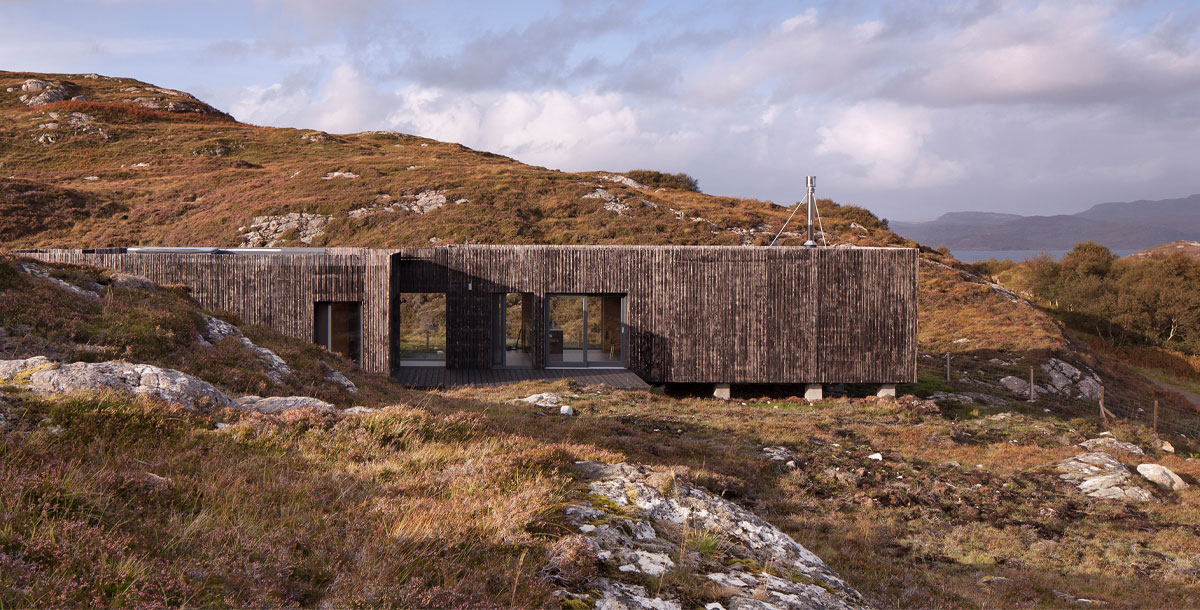Kevin McCloud on the beauty of engineered wood
These timbers can theoretically be infinite in length and capable of supporting enormous loads
Wood. Now there’s a healthy product. Grown in the quiet solitude of a forest with no fertilisers or added colourants. A carbon store that locks up CO2 for as long as it remains in use as something helpful like a book or a chair or this magazine. You would have thought the tree had been invented by god to help get us out of the environmental mess we’re in.
Ever since man accidentally discovered how to club something to death, wood has proved useful. We have built temples, ships and siege engines from minimally processed bits of tree. So what are we up to taking this perfectly serviceable and abundant material and messing around with it to produce something called ‘engineered timber’?
What’s wrong with the real thing? After all, Grand Designer Ben Law, he of the Woodland House, established with the University of Sussex that the moment you even saw a tree into planks or square section lengths the timber begins to lose its strength.
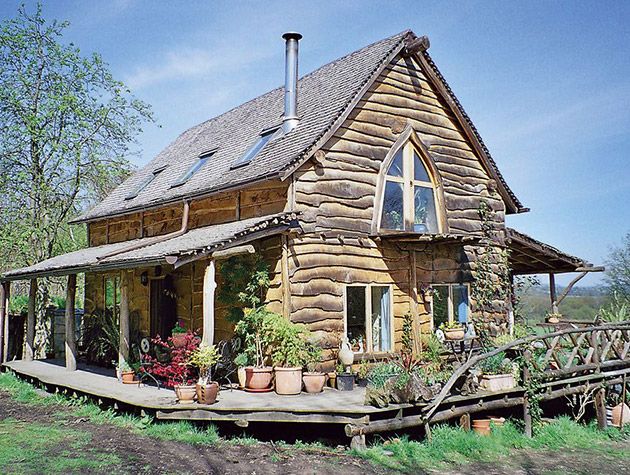
Ben Law’s wooden house. Photo: Stephen Morley
The wonkiness of wood
A wavy branch will always be stronger than the nice, square-edged beam that can be cut from it, simply because the grain in the branch follows the eccentric shape of the branch, not the beam. This fact, the wonkiness of wood if you like, its desire to twist as it dries, for the fibres to deform, has bedevilled carpenters and cabinetmakers since that caveman’s club bent slightly.
It is the reason why oak-framed buildings look the way they do (braced, pegged and jointed in all manner of clever ways to counter the twisting and shrinking), and why we have plywood. We generally like our buildings square and upright and our floors to be flat and level, not made from a raft of round poles strapped together.
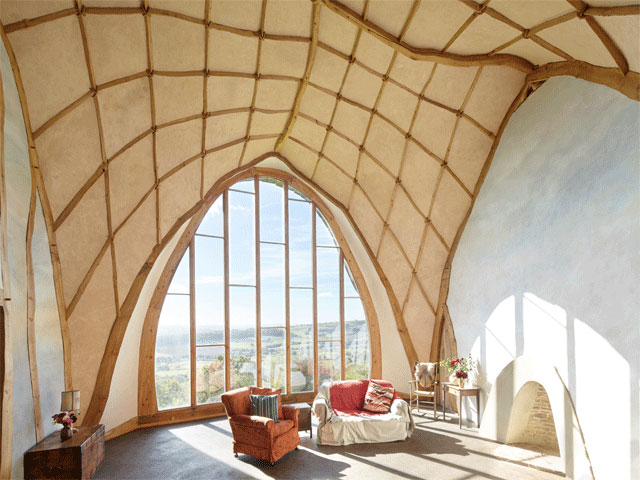
Ed and Rowena Waghorn’s Grand Designs Dug Out in Herefordshire. Photo: Andrew Wall
The magic of plywood
We like fine furniture to be decorative and smooth. We want conformity and we want wood to do what it’s told. Plywood is the most familiar form of engineered timber. There aren’t that many trees around that are large enough to provide us with planks 4ft wide and 8ft long and just 1in thick. And, if there were, such a plank would split, curve and weigh a ton.
The magic of plywood lies in its construction. If you look at it side on, it’s a bit like a wafer biscuit: layer upon layer of wood, each just a couple of millimetres thick, each ‘peeled’ – as a thin sheet from the trunk of a tree that is being slowly rotated – and then glued together. The genius is that the grain of each layer runs in a different direction. The temptation of any layer to warp or bend is always countered by the inclinations of the other layers. So your bathroom floor and shelves stay more or less level.
Depending on the glues and sealants used, plywood can be bog-standard – shuttering ply, for example, which has missing bits here and there – furniture-grade, which is in fine layers with no missing bits; WBP, water and boil proof for construction use; or marine-grade, which effectively means you could build a submarine from it.
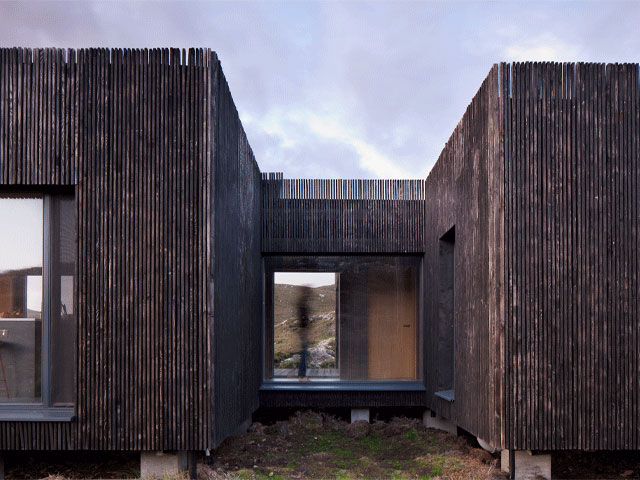
House in Assynt by Mary Arnold-Forster Architects Timber was built using cross laminated timber. Photo: David Barbour
Equivalent to a steel beam
And if you want to understand how more sophisticated engineered timbers work, they all more or less use the principles and materials enshrined in plywood. In 1m-thick laminated timber beam the layers are Scandinavian softwood, which is stronger than the UK stuff because it’s cold there and the trees are reluctant to grow fast and pulpy. These timbers can theoretically be infinite in length and capable of supporting enormous loads. Think of it as equivalent to a steel beam about a third or quarter of the thickness.
Not surprisingly, therefore, laminated engineered timber frames are just beginning to replace steel. As we strive towards zero carbon in construction, so inevitably we must wean ourselves off materials with a heavy carbon load such as steel and concrete.
The Mjøstårnet in Norway is an extraordinary 85m-tall tower, an 18-storey skyscraper built of wood with giant beams of glulam and panels of cross-laminated timber (CLT). You can visit it because it is mixed use and contains public spaces. You can eat in its restaurant, swim in its pool, admire the office space and wonder at the quality of life its residents enjoy. It is like visiting another world where steel and concrete have not been invented and everything is made of tree. And it is beautiful.
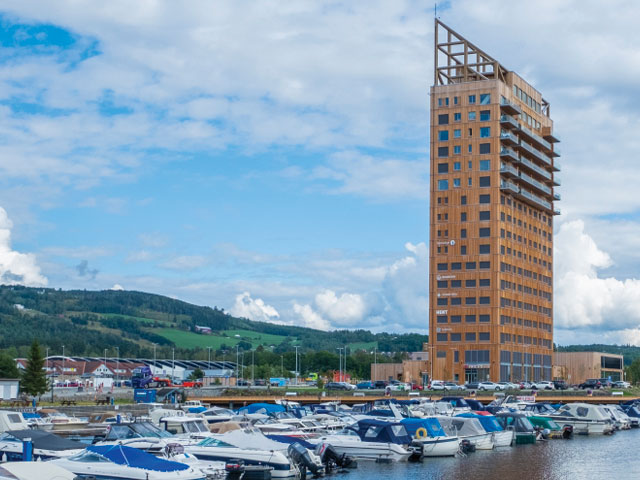
The Mjøstårnet in Norway is an 18-storey skyscraper built of wood. Photo: Moelven
Environmentally friendly
The most sensible reason I can think of for using engineered timber is its beauty. It looks prettier than steel. It’s also environmentally friendly in most cases (we’ll come onto steel’s claims in that department another day). Wood is also inherently a good insulator. If a wooden window is made from bits of timber cleverly glued to form a composite, it won’t deform and the draught won’t get in and it will quietly contribute to the insulation of the building. But, needless to say, for high-quality bits of timber cleverly glued together you should be looking at firms in Denmark, Sweden, Germany and Austria – the usual suspects.
These are places where lots of trees grow. Engineered timber often uses bits of tree that are useless for conventional timber products other than newspaper. It locks up CO2, and has a low environmental footprint. Although it is glued together using either phenol or resorcinol adhesives, which are not particularly human-friendly as they usually contain formaldehyde. In fact, common products such as MDF, particleboard and OSB, the cheap stranded board often sold as Stirling board, can contain significant quantities, which can, in turn, ‘off-gas’, causing irritation, asthma and allergic responses. The gas does, however, degrade quickly.
Admittedly, you can buy formaldehyde-free MDF, panels of fibreboard that are held together by dog lick and beams made from the incredible Parallam, which is more like a timber filo pastry than organized laminated layers, and which uses only steam to soften the lignin in the wood and rebind the strands together. It’s the equivalent of mechanically recovered meat, only a lot healthier for you.
And, of course, you can ensure the quality and sustainability of any product you buy by looking for FSC or other accredited marking. Do I need to tell you that? Yes, I think I probably do. Britain is the largest importer of illegal timber in Europe.

